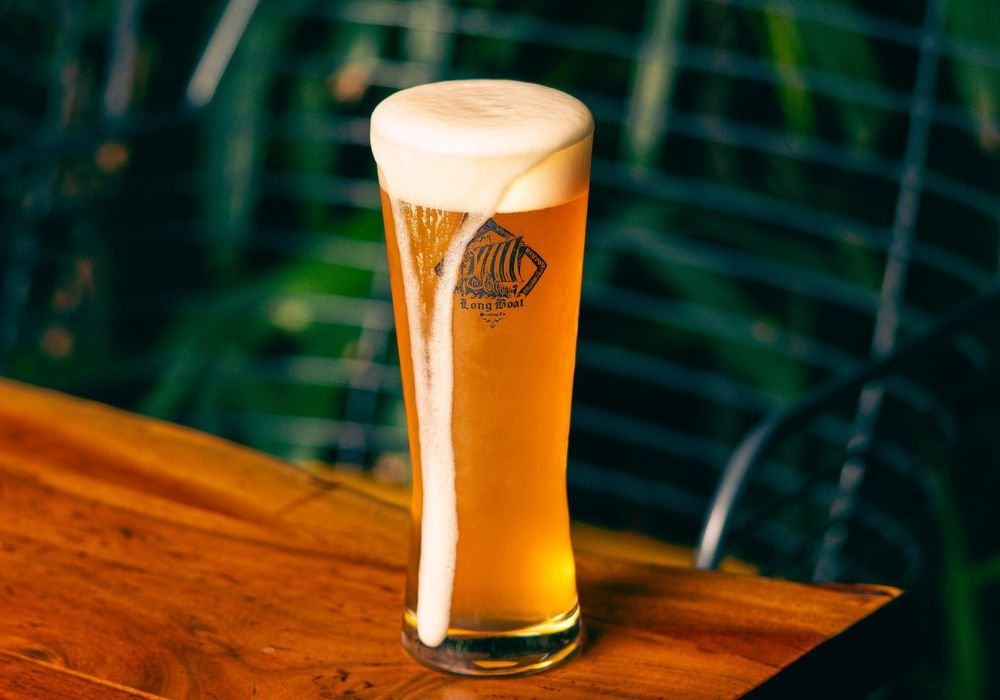Wonder what enhances the quality of your favorite glass of beer? Monitoring dissolved oxygen

Oxy 510 Smart Sensor with Operating Terminal
Determination of low amounts of oxygen with Oxy 510 Dissolved Oxygen Sensor is a must for quality control in the beverage industry where very low dissolved oxygen concentrations are monitored.
 Shamsul Khan
Shamsul Khan
Regional Sales Manager – Process Instrumentation
(South Africa, Middle East and Africa), Anton-Paar
When it comes to determining dissolved oxygen in beverages, Oxy 510 presents the perfect solution. As oxygen content is crucial for the taste and shelf life of beverages, measuring the dissolved oxygen (DO) level during production ensures product quality and minimizes the risk of potential corrosion occurring in cans.
Oxygen dissolved in beverages can react with certain components causing changes in color and taste. The amount of dissolved oxygen (DO) can be very close to zero. In case of beer, for instance, a low DO amount is the goal to maintain the specified shelf life as DO reacts with some beer components causing the beer to possibly spoil ahead of its specified shelf life. For process measurement, the Oxy 510 Smart Sensor is the perfect solution.
With the Oxy 510 inline sensor you benefit from real-time, accurate and drift-free inline measurements throughout the entire production process. As Anton-Paar uses the same technology for process and laboratory equipment you can directly compare in-line and offline measurements for production and quality control purposes.
AN OUTSTANDING OPTICAL MEASUREMENT PRINCIPLE
The determination of dissolved oxygen (DO) concentration is based on the fluorescence phase-shift principle. An oxygen-sensitive luminophore is excited by absorbing light of a defined wavelength. A part of this, absorbed light is released by emitting fluorescent light at a higher wavelength. In the presence of oxygen as the quencher molecule, a phase-shift between excitation of the luminophore and fluorescence emission occurs. The Anton-Paar family of dissolved oxygen meters and sensors detect this fluorescence quenching, and the resulting phase shift is a direct measure of the dissolved oxygen content.

CRITICAL CONTROL POINTS FOR ONLINE DO MEASUREMENT

COLD WORT BEFORE YEAST PROPAGATION (0 TO 22.5 PPM, <10PPM)
Why: To ensure proper fermentation and product quality, the cold wort is aerated to provide the yeast with sufficient oxygen so that, once all oxygen is metabolized, there is enough yeast to properly ferment all sugars in the fermenter. Insufficient oxygen can lead to insufficient yeast vitality, slow fermentation and affect product quality.
DURING YEAST PROPAGATION (0 TO 22.5 PPM, <10PPM)
Why: Poor yeast health impacts fermentation process and causes extract losses. To ensure that the yeast remains healthy and in an exponential growth rate it must have a steady supply of oxygen and extract. Monitoring the dissolved oxygen during propagation ensures a steady and healthy yeast culture.
AFTER PRIMARY FERMENTATION (0 TO 2000 PPB, <10PPB)
Why: Oxygen is essential for adequate propagation of yeast cells. Yeast strains have specific oxygen content requirements. Too much oxygen will result in an undesired, rapid and over-vigorous fermentation, affecting flavor and results in excessive yeast growth. Too little oxygen in the initial stages results in poor fermentation and could lead to an increased level of acetyl coenzyme A in the yeast cells. This in turn can produce higher levels of esters in beer and other undesirable off flavors.
To ensure proper fermentation and product quality, the cold wort is aerated to provide the yeast with sufficient oxygen so that once all oxygen is metabolized; there is enough yeast to properly ferment all sugars in the fermenter. Insufficient oxygen can lead to insufficient yeast vitality, slow fermentation and affect product quality.
BEFORE SHEET FILTER (0 TO 2000 PPB, <10PPB)
Why: If beer is exposed to high levels of oxygen when packaged, irreversible damage will be done to the flavor profile. Monitoring the dissolved oxygen before and after the filter is a good indicator, if the filter is a source of oxygen contamination.
BEFORE SHEET FILTER (0 TO 2000 PPB, <10PPB)
Why: Beer filtration, regardless of method, is a major possible source of excess dissolved oxygen in beer. Monitoring the dissolved oxygen pre and post filtration and adjusting process parameters accordingly is the only method to significantly reduce dissolved oxygen.
DE-AERATION TANK (0 TO 2000 PPB, <10PPB)
Why: When producing blended beers with a lower gravity it’s important to use carbonated water that has been properly de-aerated. In high gravity brewing, this capability significantly reduces the overall dissolved oxygen value that will be found in the beer after blending. The measurement provides a check of the blending process to high quality beer.
BEFORE FILLER (0 TO 2000 PPB, <10PPB)
Why: This is the last chance to ensure final product quality and that no additional dissolved oxygen has been added along the way.
It is safe to conclude that all the care, technology and skill invested in making beer may be undone by not measuring dissolved oxygen at the right locations. The exact choice of locations depends upon the process adopted, beer type and/or desired shelf life, but dissolved oxygen measurement is a must and choosing a sensor which is rich in features and precise in measurement is just the start.



